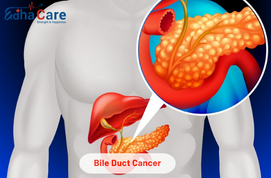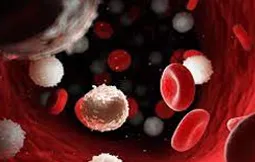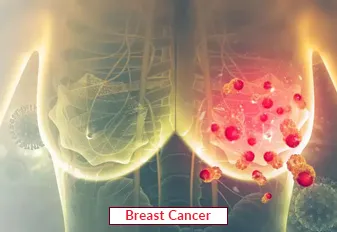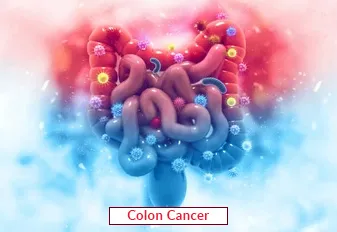Bile Duct Cancer

Bile duct cancer, additionally known as cholangiocarcinoma, arises from the cells that are covering the bile ducts, which carry bile from the hepatocytes in the liver to the small intestine. Jaundice, pain in the stomach, itching, and unexpected weight loss are a few symptoms. Exposure to chemicals, certain liver diseases, and persistent bile duct inflammation are indicators of risk. Depending on the stage and location of the cancer, options for treatment could include chemotherapy, radiation therapy, targeted therapy, and surgery for removing the tumor. Because of its aggressive nature and propensity to be identified at an advanced stage, bile duct cancer frequently has a dismal prognosis even with advancements in treatment.
About Bile Duct Cancer
Symptoms: Sudden weight loss, stomach discomfort or pain, and jaundice (yellowing of your skin and eyes) are a few of the signs and symptoms of bile duct cancer. Additional symptoms that call for a medical examination include itching, pale feces, black urine, and clay-colored stool.
Causes: Although the primary precise cause of bile duct cancer is unknown, a number of factors, including bile duct cysts or abnormalities, exposure to certain chemicals or toxins, and chronic inflammation of bile ducts (due to conditions like primary sclerosis cholangitis), may raise the risk.
Treatment: A variety of treatments are typically utilized to treat bile duct carcinoma. Options for treatment could involve chemotherapy, radiation therapy, surgery to eliminate the tumor, or a mix of these. For some kinds of bile duct carcinoma, a liver transplant may be an option. Palliative care offers supportive care and management of symptoms to help patients with cancer that is advanced live better lives. In order to improve prognosis for patients with bile duct cancer, early detection and thorough planning for treatment are crucial.
Procedure of Bile Duct Cancer
Diagnosis: A complete health history and physical exam are the first steps in the process, and symptoms such as yellowing of the skin, discomfort in the stomach, and unanticipated loss of weight are the focus of attention. Diagnostic investigations include tests of blood (liver function tests), endoscopic surgeries (ERCP, MRCP), and imaging tests (CT scan, MRI) are performed to verify the diagnosis and determine the extent of the cancer.
Preoperative Assessment: Before beginning any medical treatment, patients undergo a comprehensive evaluation to see if they are in good enough health to undergo surgery. Testing for pulmonary function, heart examination, and nutritional analysis may be part of this.
Anesthetic: The patient receives anesthetic on the day of the procedure in order to make sure they are comfortable and pain-free. Depending on the particular surgical technique and the patient's health, either general or regional anesthetic will be employed.
Surgical Approach: The location, size, and extent of the tumor, as well as the involvement of surrounding structures, all influence the surgical strategy for bile duct cancer. Surgery possibilities include hepatectomy (resection of the liver), bile duct resection (resection of the damaged segment of the bile duct), and in some circumstances, liver transplantation.
Lymph Node Dissection: To find out if the malignancy has progressed past the bile ducts, abdominal lymph nodes may occasionally be removed (lymphadenectomy). This aids in cancer staging and directs the selection of other treatments.
Reconstruction: To restore bile flow and liver function after bile duct resection or liver transplantation, reconstructive treatments may be carried out. Procedures like Roux-en-Y hepaticojejunostomy or bile duct reconstruction may be necessary for this.
Postoperative Care: After surgery, patients are kept under constant observation in the recovery area in case there are any complications, including bleeding, infection, or bile leakage. On-demand early mobilization, wound care, and pain treatment are offered. Following surgery, patients are given guidelines for their postoperative care, which include what to eat, how much they may do, and when to schedule follow-up visits for monitoring and adjuvant therapy.
Require Assistance?
Get A Quick Callback From Our Healthcare Experts






